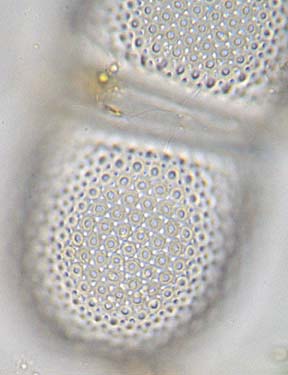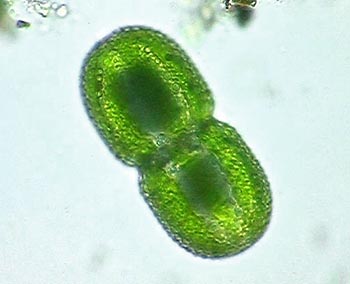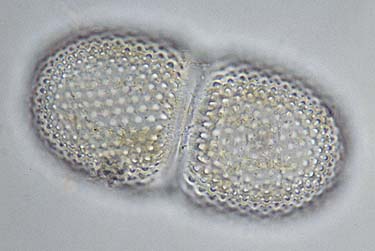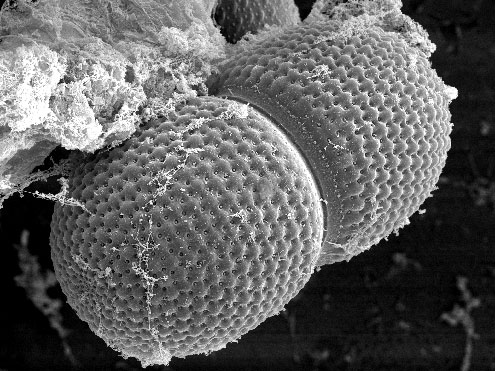|
Desmid
of the month
September 2004
Cosmarium
striolatum
C.
striolatum* can hardly be confused with any other Cosmarium-species.
The large, rounded-cylindrical cells are characterized by a slight median
constriction and a very regular pattern of cell wall granules, arranged
in transversal and oblique-decussate series. In Europe, the species in
question is far from common. The Netherlands seem to be at the westernmost
border of its distribution area, for C. striolatum was never recorded
from the United Kingdom (Brook & Williamson, 1991). In the Netherlands
until recently C. striolatum was only known from some moorland
pools near the village of Oisterwijk where it was encountered by Prof.
J. Heimans in 1916. However, June 2002 it was rediscovered in a number
of mesotrophic quivering fen plots in the nature reserve ‘De Wieden’ (Coesel,
2004).
* Synonym: Cosmarium tesselatum

Image
© Wim van Egmond
Detail
of cell wall. The granules are arranged in transversal and oblique-decussate
series; each granule is surrounded by six cell wall pores.
References:
Brook,
A.J. & D.B. Williamson, 1991. A check-list of desmids of the British
Isles. Freshwater Biological Association, Ambleside, 40 pp.
Coesel,
P., 2004. Bijzondere sieralgvondsten in ‘De Wieden’ (in Dutch, with
summary in English). — Gorteria 30: 1-6. |

Image
© Henk Schulp
Live cell
of Cosmarium striolatum. The chloroplast consists of a number
of broad, longitudinal, parietal bands.
Cell dimensions
(L x B): ca 150 x 70 µm

Image ©
Wim van Egmond (mouse-over)
Dead, empty
cell showing the characteristic, regular pattern of cell wall sculpture
(mouse-over).
 Image © Jan Šťastný Image © Jan Šťastný
SEM image of Cosmarium striolatum.
|



